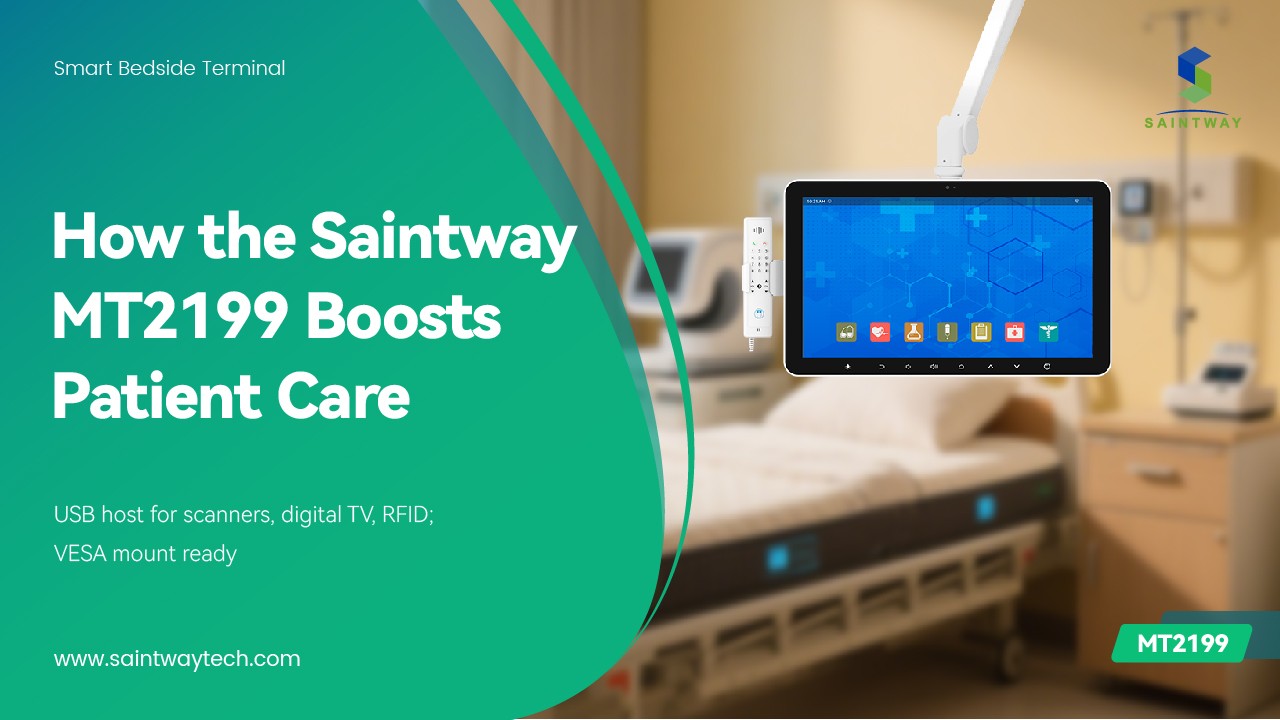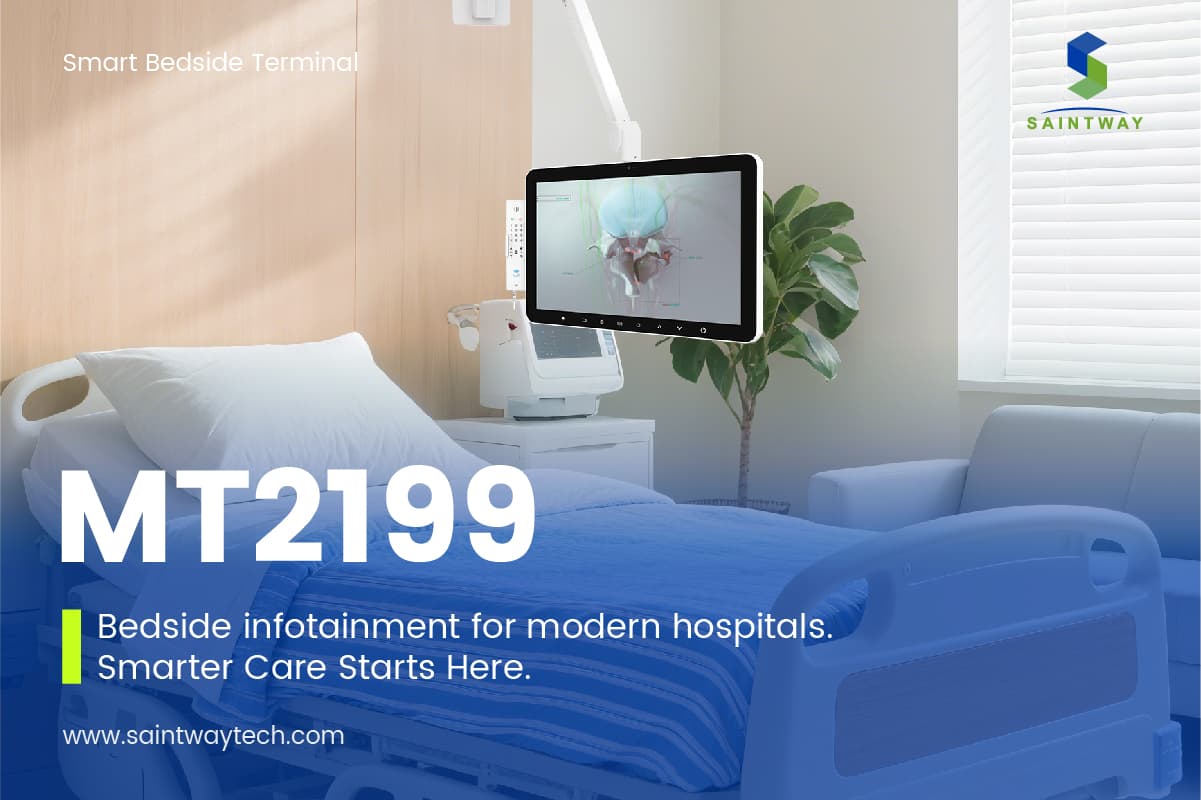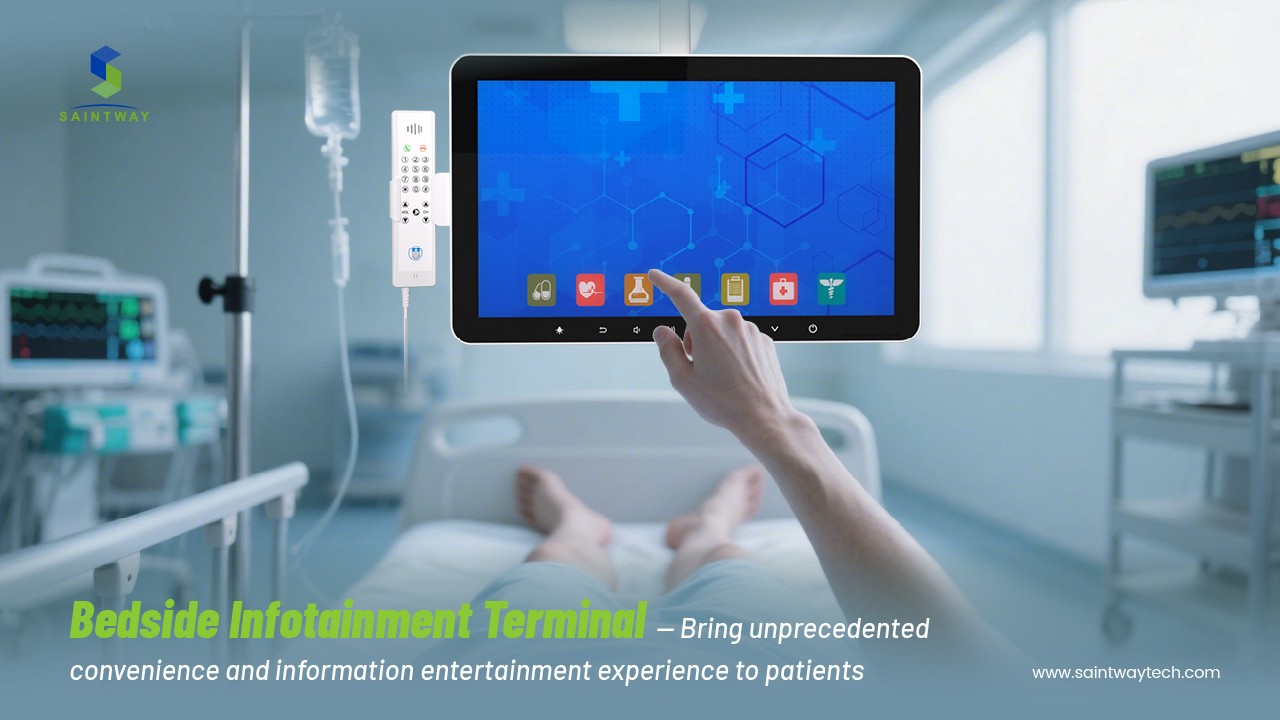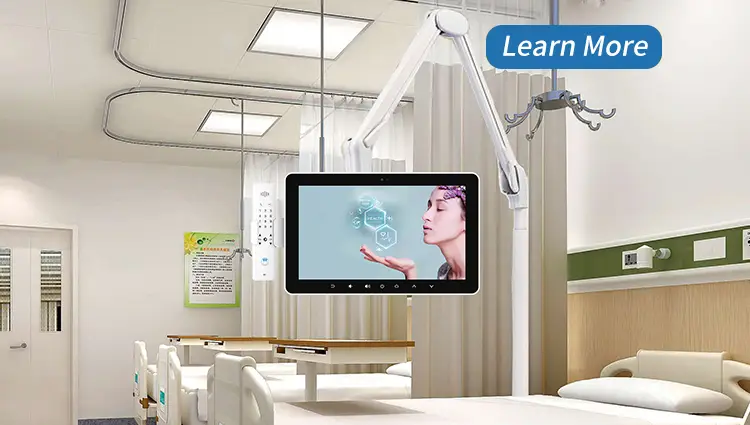In today’s fast-paced healthcare landscape, hospitals constantly seek innovative solutions to enhance patient satisfaction while streamlining operations. Enter VoIP patient infotainment terminals—the game-changing technology that combines voice over internet protocol (VoIP) communication with interactive entertainment and information systems. These bedside devices empower patients to stay connected, entertained, and informed during their stays, ultimately boosting recovery rates and reducing stress. As healthcare providers face mounting pressure to deliver personalized care, adopting these terminals emerges as a strategic imperative. This guide dives deep into their benefits, addresses common concerns, and reveals why forward-thinking facilities implement them immediately to stay ahead in 2025.

What Exactly Is a VoIP Patient Infotainment Terminal?
VoIP patient infotainment terminals serve as multifunctional bedside hubs designed specifically for hospital environments. Essentially, they integrate VoIP technology—allowing voice calls over the internet—with interactive screens that offer entertainment, educational content, and real-time communication tools. Patients can make video calls to family, stream movies, access health education materials, or even control room settings like lighting and bed adjustments. Meanwhile, healthcare staff utilize these systems for efficient patient monitoring, electronic health record (EHR) access, and instant alerts.
Transitioning from traditional landline phones and basic TVs, these terminals leverage high-speed internet to provide seamless connectivity. For instance, they enable remote consultations via telehealth features, ensuring patients receive timely care without physical transfers. According to industry analyses, such systems not only improve communication but also cut operational costs by up to 50% compared to legacy phone systems. This shift represents a pivotal advancement in patient-centered care, where technology actively supports emotional well-being alongside medical treatment.
The Transformative Benefits for Patients and Providers
Healthcare leaders prioritize solutions that deliver measurable results, and VoIP patient infotainment terminals excel in this regard. First and foremost, they enhance patient engagement by offering personalized experiences. Imagine a patient recovering from surgery: Instead of staring at blank walls, they browse tailored content, watch favorite shows, or video chat with loved ones—reducing anxiety and isolation. Studies show that such engagement can improve patient satisfaction scores by 20-30%, leading to faster recoveries and fewer readmissions.
For providers, these terminals streamline workflows dramatically. Nurses receive instant call alerts, doctors access lab results directly from the device, and administrators integrate them with EHR systems for real-time data sharing. This connectivity fosters better team collaboration, minimizing errors and saving time. Moreover, VoIP’s cost-efficiency shines through: Organizations report savings of up to 50% on communication expenses by ditching outdated infrastructure. In an era where healthcare costs soar, these savings allow reinvestment into core services.
Additionally, security remains paramount. HIPAA-compliant VoIP systems encrypt calls and data, safeguarding patient privacy while enabling secure telehealth sessions. Providers thus maintain trust, avoiding costly breaches. Overall, these terminals transform hospitals into efficient, patient-friendly ecosystems, addressing both clinical and emotional needs effectively.

How VoIP Patient Infotainment Terminals Work in Practice
Implementing these terminals begins with seamless integration into existing hospital networks. Powered by reliable internet, VoIP converts voice signals into digital packets, transmitting them efficiently without traditional phone lines. Patients interact via intuitive touchscreens, selecting options like entertainment apps, nurse calls, or educational videos on conditions such as diabetes management.
Behind the scenes, advanced features like AI-driven personalization analyze patient data to suggest relevant content, enhancing adherence to treatment plans. For example, a terminal might remind users about medication times or provide interactive quizzes on post-discharge care. Providers access dashboards for monitoring vital signs remotely, ensuring proactive interventions. Scalability stands out too—these systems expand easily as facilities grow, supporting everything from small clinics to large hospitals.
A standout example is the Saintway MT2199, a 21.5-inch bedside touchscreen terminal that exemplifies cutting-edge design. This device allows patients to video chat with family, browse entertainment, and review treatment plans effortlessly, all while integrating VoIP for crystal-clear calls. Its adjustable arms and ADA-compliant features make it ideal, boosting both comfort and connectivity in demanding environments. Such products demonstrate how terminals adapt to diverse needs, driving adoption across the sector.
Asked Questions
As interest surges, healthcare professionals often pose key questions about VoIP patient infotainment terminals. Let’s tackle the most common ones with actionable insights.
What Are the Main Features of These Terminals? Core features include VoIP calling for voice and video communication, multimedia entertainment (streaming services, games), patient education modules, and integration with hospital systems for nurse calls and EHR access. Advanced models offer voice control for disabled patients, ensuring inclusivity. These elements collectively reduce boredom and empower self-care.
How Do They Improve Patient Care? By facilitating better communication, terminals enable remote monitoring and quick responses to needs, cutting response times by 40% in some cases. Patients report higher satisfaction, with statistics indicating a 15-20% drop in anxiety levels through interactive content. Providers benefit from data analytics, spotting trends early for preventive care.
Are They Secure and Compliant?
Absolutely. Reputable systems adhere to HIPAA standards, employing encryption and secure protocols to protect sensitive data. Regular audits and updates mitigate risks, making them safer than traditional phones prone to eavesdropping.
What About Cost and ROI?
Initial setup costs vary, but long-term savings from reduced hardware maintenance and lower call expenses yield quick ROI—often within 12-18 months. Market data projects the patient infotainment sector reaching $2.5 billion in 2025, underscoring strong growth potential.
Can They Integrate with Existing Systems?
Yes, most terminals seamlessly connect with EHRs, telehealth platforms, and nurse call systems, minimizing disruption during rollout. This flexibility ensures hospitals upgrade without overhauling infrastructure.
What Challenges Might Arise During Implementation?
Common hurdles include network reliability and staff training. However, partnering with experienced vendors resolves these, with robust troubleshooting for issues like jitter or latency. Proactive planning guarantees smooth adoption.
These answers highlight how terminals solve real-world problems, offering exclusive advantages like personalized care that competitors envy.

Market Trends and Statistics: Why Act Now?
The global market for patient infotainment systems surges forward, valued at approximately $2.5 billion in 2025 and projected to grow at a CAGR of 9.86% through 2032. Driven by aging populations and digital health initiatives, adoption rates climb rapidly in regions like North America and Asia-Pacific. For instance, hospitals using these systems see a 25% increase in patient engagement, correlating with better outcomes and higher reimbursements under value-based care models.
Storytelling illustrates impact: Consider a busy urban hospital overwhelmed by patient complaints. After installing VoIP terminals, satisfaction soared as families connected virtually during restrictions, turning potential crises into success stories. Such narratives underscore urgency—delaying implementation risks falling behind peers embracing this technology.
Strategies for Successful Implementation
To maximize benefits, start with a needs assessment: Evaluate your facility’s infrastructure and patient demographics. Choose scalable, user-friendly systems like those with antimicrobial screens for hygiene. Train staff thoroughly to leverage features, and monitor usage analytics for continuous improvement. Finally, pilot in one ward before full rollout, gathering feedback to refine the approach. These steps ensure terminals deliver promised value, fostering loyalty and efficiency.
In conclusion, VoIP patient infotainment terminals represent a bold leap toward superior healthcare delivery. By blending communication, entertainment, and education, they address critical needs, drive cost savings, and elevate experiences. As the market explodes, savvy providers adopt them now to secure competitive edges and delight patients. Don’t wait—explore integration options today and transform your facility into a beacon of innovation.


